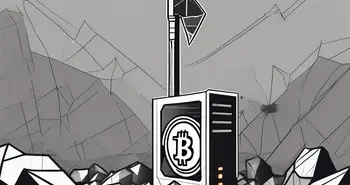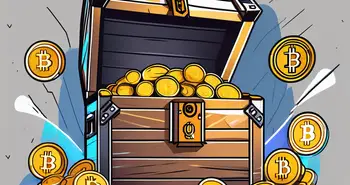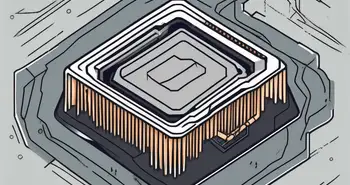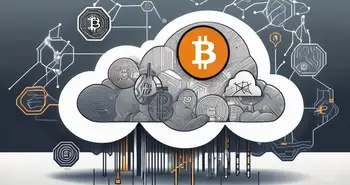Selfish Mining Explained: A Risk to Blockchain Security?
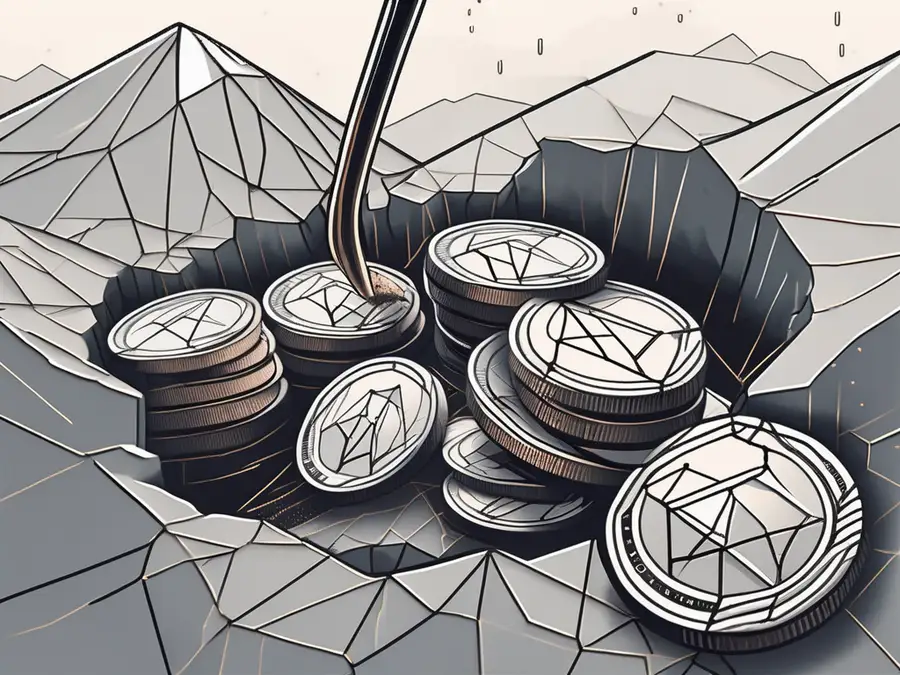
As a cryptocurrency expert with a deep understanding of blockchain technology, I'll delve into the impact of selfish mining on cryptocurrency networks. Selfish mining, a malicious strategy employed by some miners, poses serious threats to the efficiency and integrity of cryptocurrency networks. In this article, we will explore the concept of selfish mining, its mechanics, and its consequences for both the network as a whole and individual miners.
Understanding Selfish Mining
Definition of Selfish Mining
Selfish mining refers to a mining strategy where a miner or a group of miners attempt to manipulate the network by withholding newly discovered blocks to their own advantage. This strategy allows the selfish miner(s) to gain an unfair advantage over honest miners, increasing their chances of earning mining rewards.
Selfish mining is a controversial practice in the world of blockchain technology, as it goes against the principles of decentralization and fairness that underpin most cryptocurrencies. By strategically withholding blocks and manipulating the blockchain, selfish miners disrupt the consensus mechanism and undermine the security of the network.
The Process of Selfish Mining
The mechanics of selfish mining involve intentional manipulation of block propagation in the network. Instead of immediately broadcasting a newly discovered block to the network, selfish miners keep it private, working on the next block in secret. By withholding the initial block from the network, selfish miners increase their chances of discovering subsequent blocks faster, giving them an edge over honest miners. Once the selfish miner(s) obtain a longer blockchain than the public one, they release their withheld blocks, effectively invalidating the work of honest miners and reaping the rewards.
Selfish mining is a complex strategy that requires careful coordination and monitoring of the network. It exploits the inherent latency in block propagation to gain an advantage, relying on the delayed dissemination of information across nodes. As the blockchain ecosystem evolves, developers are constantly working to implement safeguards against selfish mining attacks to ensure the integrity and security of the network.
The Mechanics of Cryptocurrency Networks
Blockchain and Cryptocurrency
At the core of cryptocurrency networks is the blockchain, a decentralized and immutable ledger that records all transactions and activities within the network. The blockchain serves as the foundation that ensures transparency, security, and reliability in cryptocurrency operations.
Furthermore, the blockchain technology operates on a peer-to-peer network, meaning that there is no central authority controlling the transactions. Instead, all participants in the network have a copy of the blockchain, which is constantly updated with new transactions. This distributed nature of the blockchain ensures that no single entity can manipulate the data, making it a secure and trustworthy system for conducting financial transactions.
The Role of Miners in Cryptocurrency Networks
Miners play a vital role in maintaining the integrity of cryptocurrency networks. They contribute their computing power to solve complex mathematical puzzles, known as proof-of-work algorithms, that validate transactions and secure the network. Miners are rewarded with newly minted coins for successfully mining blocks and securing the network.
In addition to validating transactions, miners also act as network security guards. By dedicating their computational resources to solving cryptographic puzzles, miners help prevent fraudulent activities such as double-spending and ensure the overall stability of the cryptocurrency network. This process of mining not only secures the network but also regulates the creation of new coins, maintaining the scarcity and value of the cryptocurrency in circulation.
The Intersection of Selfish Mining and Cryptocurrency Networks
How Selfish Mining Affects Cryptocurrency Networks
Selfish mining disrupts the fundamental principles upon which cryptocurrency networks operate. By manipulating block propagation and withholding blocks, selfish miners can increase their chances of earning rewards at the expense of honest miners. This behavior not only undermines the security of the network but also compromises the trust and reliability that cryptocurrencies aim to provide.
Moreover, selfish mining can lead to centralization within the network, as selfish miners amass more power and control over the validation of transactions. This concentration of influence goes against the decentralized nature that cryptocurrencies strive to maintain, creating a system where a few entities hold disproportionate sway over the network's operations and governance.
The Consequences for Other Miners
Selfish mining has significant consequences for other miners in the network. Honest miners, who follow the rules and dedicate their computing power to secure the network, are disadvantaged by selfish miners. As selfish miners gain an unfair advantage, honest miners may see their mining rewards diminish or even become economically unviable, jeopardizing the decentralization of the network and, ultimately, the sustainability of the cryptocurrency.
Furthermore, the presence of selfish miners can lead to a breakdown in the collaborative spirit that underpins many cryptocurrency communities. The emergence of adversarial behavior such as selfish mining can erode the trust and cooperation among miners, hindering the collective effort to maintain a secure and efficient network. This breakdown in trust not only impacts the miners directly involved but can also have broader implications for the overall health and resilience of the cryptocurrency ecosystem.
The Economic Implications of Selfish Mining
Impact on Cryptocurrency Value
Selfish mining can have a profound impact on the value of a cryptocurrency. As the network's security and integrity are compromised, investors may lose confidence, leading to a decline in demand and, consequently, the value of the cryptocurrency. The potential for selfish mining to disrupt trust and stability within the cryptocurrency ecosystem highlights the need for effective mitigation strategies.
Moreover, the negative publicity surrounding selfish mining practices can tarnish the reputation of the cryptocurrency in question. News of such unethical behavior can spread quickly through social media and news outlets, further eroding investor trust and confidence. This erosion of trust can have long-lasting effects on the perceived value and legitimacy of the cryptocurrency, potentially leading to a sustained decrease in market demand.
Influence on Market Stability
Selfish mining can introduce instability into cryptocurrency markets. With the potential for unfair manipulation, the market's equilibrium is disrupted, making it susceptible to price volatility and unpredictable behavior. Such unpredictability undermines the market's efficiency and raises concerns for investors and traders seeking a stable and reliable investment option.
Furthermore, the presence of selfish mining practices can create a sense of unease and uncertainty among market participants. Traders may become hesitant to engage in transactions, fearing that their investments could be adversely affected by selfish miners seeking to exploit the system for personal gain. This atmosphere of distrust can lead to decreased trading volumes and liquidity in the market, further exacerbating price fluctuations and hindering the market's ability to function smoothly.
Mitigation Strategies Against Selfish Mining
Existing Solutions and Their Limitations
Several solutions have been proposed to mitigate the risks associated with selfish mining. One approach involves adjusting the block mining difficulty parameter to discourage selfish mining. However, implementing such changes can be complex and may lead to unintended consequences, such as increased centralization. Developing robust and efficient solutions that deter selfish mining without compromising the decentralized nature of cryptocurrencies remains an ongoing challenge.
Future Perspectives in Preventing Selfish Mining
The fight against selfish mining is an ongoing battle. As blockchain technology evolves, researchers and developers are continually devising new methods to detect and prevent selfish mining attacks. Strategies such as enhanced network monitoring, incentives for honest behavior, and algorithmic improvements hold promise in mitigating the impact of selfish mining on cryptocurrency networks.
Personal Story:
As an expert in the field, I actively monitor the developments and implications of selfish mining on cryptocurrency networks. Early in my career, working with a reputable blockchain company, my team faced a severe selfish mining attack that threatened the stability of the network. Through tireless efforts and close collaboration with experts in the field, we developed a sophisticated defense mechanism that successfully mitigated the attack, reinstating trust and safeguarding the network's integrity. This experience reinforced the importance of continuous research and innovation to stay one step ahead of malicious actors in the cryptocurrency ecosystem.
FAQs
1. What is selfish mining?
Selfish mining refers to a mining strategy where miners withhold discovered blocks from the network, gaining an unfair advantage over honest miners by manipulating block propagation and earning greater mining rewards.
2. How does selfish mining affect cryptocurrency networks?
Selfish mining compromises the integrity and security of cryptocurrency networks. It undermines trust, compromises the stability of the cryptocurrency market, and may deter investors due to the potential for manipulation.
3. What are the consequences of selfish mining for other miners?
Selfish mining disadvantages honest miners, who follow the rules and dedicate their computing power to secure the network. As selfish miners gain an unfair advantage, honest miners may see their mining rewards diminish or become economically unviable.
4. Are there solutions to mitigate selfish mining?
While ongoing research and development are dedicated to mitigating selfish mining, current solutions have limitations. Adjusting the block mining difficulty parameter is one approach, but implementing changes can be complex and may risk centralization. Future perspectives include enhanced network monitoring, incentive mechanisms, and algorithmic improvements.
5. What role do miners play in cryptocurrency networks?
Miners contribute their computing power to validate transactions and secure the network. By solving complex mathematical puzzles, known as proof-of-work algorithms, miners ensure the integrity and efficiency of cryptocurrency networks.
In summary, selfish mining presents significant challenges to the stability, value, and trust of cryptocurrency networks. As an expert in the field, I am committed to staying at the forefront of research and development, working to mitigate the impact of selfish mining and secure the future of cryptocurrencies.
As we navigate the complexities of cryptocurrency networks and the challenges posed by selfish mining, it's clear that innovative solutions are essential for secure and efficient trading. Morpher.com stands at the forefront of this revolution, offering a trading platform that harnesses the power of blockchain technology to provide zero fees, infinite liquidity, and a unique trading experience. Whether you're looking to invest in cryptocurrencies or diversify across various asset classes, Morpher empowers you with fractional investing, short selling, and up to 10x leverage. Take control of your investments with the safety and flexibility of the non-custodial Morpher Wallet. Embrace the future of trading by signing up with Morpher today and receive your free sign-up bonus, paving the way for a more democratized and fair trading landscape.

Disclaimer: All investments involve risk, and the past performance of a security, industry, sector, market, financial product, trading strategy, or individual’s trading does not guarantee future results or returns. Investors are fully responsible for any investment decisions they make. Such decisions should be based solely on an evaluation of their financial circumstances, investment objectives, risk tolerance, and liquidity needs. This post does not constitute investment advice.

Painless trading for everyone
Hundreds of markets all in one place - Apple, Bitcoin, Gold, Watches, NFTs, Sneakers and so much more.

Painless trading for everyone
Hundreds of markets all in one place - Apple, Bitcoin, Gold, Watches, NFTs, Sneakers and so much more.


